Why Mining Corporations Choose Lida Group’s High Quality Mobile Houses for Durable Prefab Building Camp Solutions
2025-Aug-25 13:42:24
By Admin
1. Introduction
The global mining industry stands as a cornerstone of economic development, powering industries ranging from construction to manufacturing by extracting vital minerals and resources. However, mining operations are often situated in remote, harsh, and challenging environments—from arid deserts and frozen tundras to mountainous regions and dense jungles. In these locations, establishing safe, functional, and durable living and working spaces for personnel is not just a logistical necessity but a critical factor in ensuring operational efficiency, employee well-being, and long-term project success.
Traditional construction methods, which rely on on-site labor, locally sourced materials (often scarce in remote areas), and extended build times, have long been a bottleneck for mining corporations. Delays in camp construction can postpone the start of mining activities, leading to significant financial losses. Moreover, traditional buildings often struggle to withstand the extreme conditions of mining sites, such as temperature fluctuations, heavy winds, corrosion from mineral-rich soils or moisture, and even seismic activity in some regions. These challenges have driven mining companies to seek alternative solutions that combine durability, speed of deployment, and adaptability—needs that prefabricated (prefab) mobile houses have emerged to meet.
Among the numerous providers of prefab building solutions, Lida Group has distinguished itself as a preferred partner for mining corporations worldwide. The company’s high-quality mobile houses are specifically engineered to address the unique demands of mining camps, offering a blend of durability, functionality, sustainability, and cost-effectiveness that aligns with the industry’s evolving priorities. This article explores the key reasons why mining corporations increasingly choose Lida Group’s mobile houses for their durable prefab building camp solutions, examining the technical, operational, and strategic benefits that set these products apart in a competitive market.

2. The Unique Challenges of Mining Camp Construction
Before delving into Lida Group’s offerings, it is essential to understand the specific challenges that mining corporations face when establishing camps. These challenges not only define the requirements for camp solutions but also highlight why traditional construction falls short—and why prefab mobile houses, particularly those from Lida Group, have become a game-changer.
2.1 Remote and Inaccessible Locations
Most mining sites are located far from urban centers, where infrastructure such as roads, electricity, and water supply is limited or non-existent. Transporting construction materials to these sites is costly and time-consuming, as it often requires specialized vehicles (e.g., off-road trucks, cargo planes) and coordination with local authorities to navigate unimproved routes. Traditional construction also demands a large on-site workforce, which is difficult to recruit and retain in remote areas—further delaying projects and increasing labor costs.
2.2 Extreme Environmental Conditions
Mining sites are exposed to some of the harshest environmental conditions on Earth. For example:
- Arid Deserts: High temperatures (often exceeding 40°C/104°F during the day) and low humidity can damage traditional building materials, such as wood (which dries and cracks) and concrete (which cures improperly). Sandstorms can erode exteriors and clog ventilation systems.
- Frozen Tundras and Polar Regions: Sub-zero temperatures (as low as -40°C/-40°F) can cause water pipes to freeze and burst, and traditional insulation may fail to maintain livable indoor temperatures, leading to discomfort and health risks for workers.
- Coastal or Humid Areas: Saltwater or high moisture levels accelerate corrosion of metal structures, while mold and mildew can grow in poorly ventilated spaces, compromising indoor air quality and the durability of the building.
- Seismic Zones: Mining activities (such as blasting) or natural geological activity can generate vibrations, which traditional brick-and-mortar buildings are poorly equipped to withstand, increasing the risk of structural damage or collapse.
2.3 Need for Rapid Deployment and Flexibility
Mining projects often have tight timelines, with corporations eager to start extraction as soon as possible to recoup investments. Traditional construction can take months or even years to complete a camp, depending on the size and complexity—far too slow for the industry’s needs. Additionally, mining operations are dynamic: a site may be active for a few years before resources are depleted, requiring the camp to be dismantled and relocated. Traditional buildings are permanent and cannot be easily moved, resulting in wasted resources and additional costs when the site is abandoned.
2.4 Focus on Safety and Compliance
Mining corporations are subject to strict safety regulations from local governments and international bodies (such as the International Labour Organization, ILO). Camps must meet standards for fire safety, structural integrity, electrical safety, and sanitation to protect workers from harm. Traditional construction, which relies on on-site labor with varying skill levels, can lead to inconsistencies in quality and compliance, increasing the risk of accidents or regulatory penalties.
2.5 Cost Pressures
The mining industry is highly cyclical, with profitability tied to commodity prices. Corporations must balance the need for high-quality infrastructure with cost efficiency. Traditional construction often incurs unexpected costs—such as delays due to weather or material shortages, or the need for expensive maintenance over time—which can strain budgets. Prefab solutions, if designed well, can reduce these costs by streamlining production and minimizing on-site labor.
These challenges collectively create a demand for camp solutions that are durable, fast to deploy, flexible, safe, and cost-effective. Lida Group’s high-quality mobile houses are engineered to address each of these needs, making them a top choice for mining corporations.
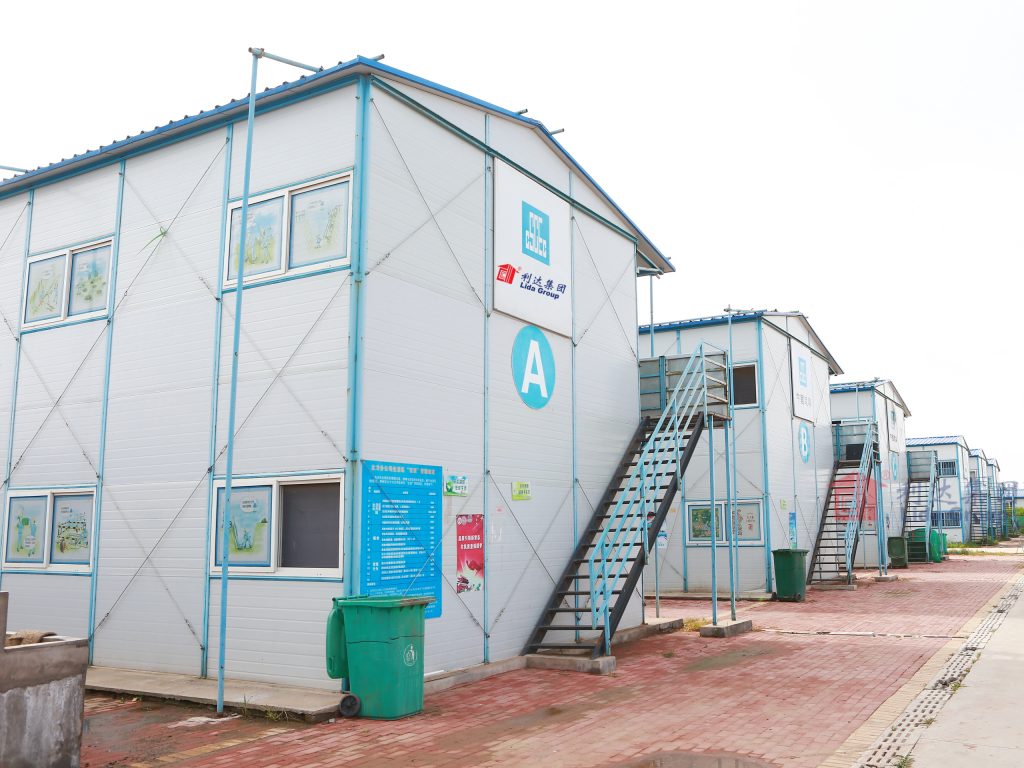
3. Lida Group’s Mobile Houses: Key Features Tailored to Mining Needs
Lida Group, a leading manufacturer of prefab buildings, has spent years researching and developing mobile house solutions specifically for the mining industry. The company’s products are not generic prefab structures but are customized to withstand the unique challenges of mining sites while meeting the operational and safety requirements of mining corporations. Below are the key features that make Lida Group’s mobile houses stand out.
3.1 Exceptional Durability: Built to Withstand Harsh Mining Environments
Durability is non-negotiable for mining camp buildings, as they must endure extreme weather, corrosion, and physical stress over extended periods. Lida Group prioritizes durability in every aspect of its mobile house design and production.
3.1.1 High-Quality Materials
Lida Group uses only premium, industry-grade materials that are selected for their resistance to harsh conditions. For example:
- Structural Frames: The main framework of the mobile houses is constructed from high-strength galvanized steel. Galvanization involves coating steel with a layer of zinc, which provides excellent corrosion resistance—critical for sites with high moisture, salt, or mineral content. Unlike traditional steel frames, which can rust and weaken over time, Lida Group’s galvanized steel frames have a lifespan of up to 20-30 years, even in corrosive environments. Additionally, the steel is engineered to withstand heavy loads (such as snow in cold regions) and vibrations from mining activities, ensuring structural integrity.
- Exterior Cladding: The exterior walls and roofs are made from high-density fiber cement boards or metal composite panels (MCPs). Fiber cement boards are resistant to fire, water, termites, and rot, making them ideal for humid or tropical mining sites. MCPs, which consist of two metal sheets bonded to a core material (such as polyurethane foam), offer superior insulation and impact resistance—protecting the building from sandstorms, hailstones, or falling debris in mountainous areas. Both materials are also low-maintenance, requiring minimal repainting or repairs over time.
- Insulation Materials: To address temperature extremes, Lida Group’s mobile houses are equipped with high-performance insulation. In cold regions, the walls, roofs, and floors are insulated with polyurethane foam or rock wool, which have high thermal resistance (R-value) and can maintain indoor temperatures at a comfortable 20-25°C (68-77°F) even when outdoor temperatures drop to -40°C (-40°F). In hot regions, reflective insulation layers are added to the roof to reflect sunlight and reduce heat absorption, keeping the interior cool without overreliance on air conditioning.
- Windows and Doors: The windows and doors are made from aluminum alloy frames with double-glazed glass. Aluminum alloy is lightweight yet strong, and it resists corrosion—unlike wood or steel frames. Double-glazed glass provides excellent thermal insulation (reducing heat transfer in hot or cold climates) and soundproofing, which is important for minimizing noise from mining equipment in the camp. Additionally, the windows and doors are designed to be windproof and waterproof, with tight seals that prevent dust, rain, or snow from entering the building.
3.1.2 Rigorous Testing and Quality Control
Lida Group subjects its mobile houses to rigorous testing to ensure they meet or exceed international standards for durability and safety. The company’s testing facilities simulate extreme environmental conditions, such as:
- Temperature Cycling Tests: Buildings are exposed to rapid temperature changes (from -40°C to 60°C) to test the integrity of insulation and structural materials.
- Wind Tunnel Tests: Structures are tested against high winds (up to 120 km/h, equivalent to a strong tropical storm) to ensure they remain stable and do not sustain damage.
- Corrosion Tests: Metal components are exposed to salt spray or acidic environments for extended periods to evaluate their resistance to rust and degradation.
- Seismic Tests: Buildings are subjected to vibrations simulating earthquakes (up to magnitude 7.0) to ensure they can withstand seismic activity without collapsing.
Moreover, Lida Group implements strict quality control measures throughout the production process. Each component (from steel frames to insulation panels) is inspected for defects before assembly, and the final product is checked against a detailed checklist to ensure compliance with design specifications and safety standards. This commitment to quality ensures that mining corporations receive mobile houses that are reliable and long-lasting, even in the harshest conditions.
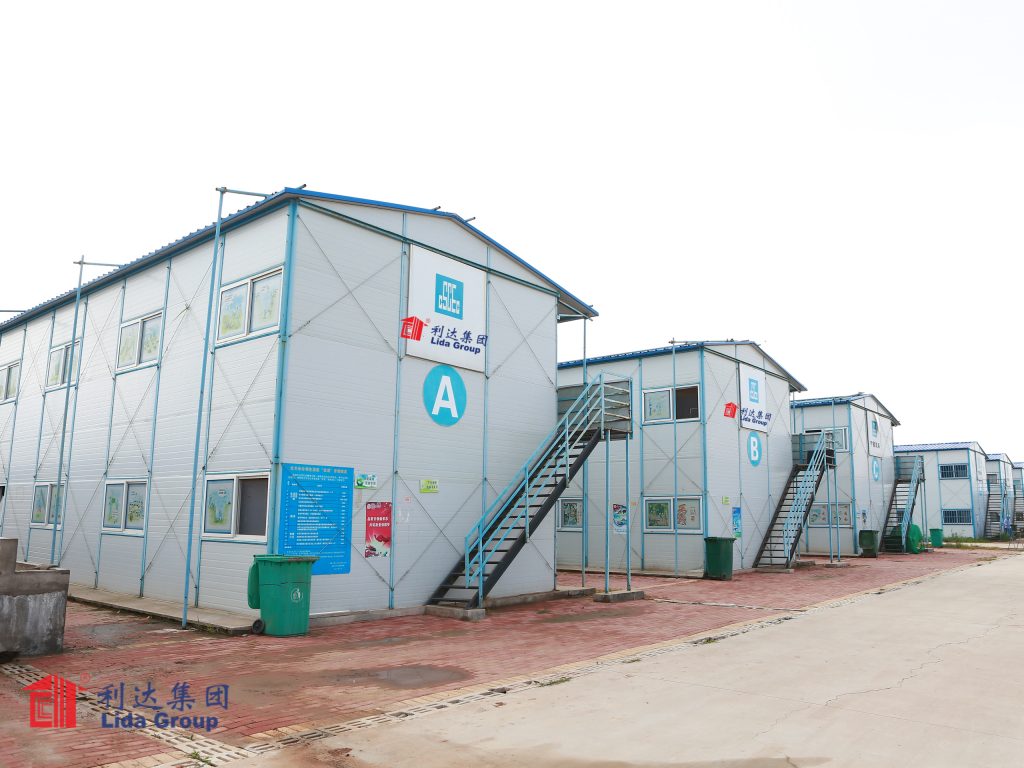
3.2 Rapid Deployment: Minimizing Downtime for Mining Operations
One of the biggest advantages of prefab mobile houses is their speed of deployment—and Lida Group has optimized this process to meet the tight timelines of mining projects.
3.2.1 Off-Site Manufacturing
Lida Group’s mobile houses are fully manufactured in controlled factory environments, rather than being built on-site. This off-site production offers several benefits for speed:
- Reduced Weather Delays: Factory production is not affected by rain, snow, or extreme temperatures, which often delay traditional on-site construction.
- Efficient Assembly Lines: The company uses advanced assembly line techniques to produce components quickly and consistently. For example, steel frames are cut, welded, and galvanized in a streamlined process, and wall panels are pre-installed with insulation, wiring, and plumbing before being shipped.
- Pre-Integration of Systems: Electrical, plumbing, and HVAC (heating, ventilation, and air conditioning) systems are fully integrated into the mobile houses during manufacturing. This means that once the units arrive on-site, there is no need for time-consuming on-site installation of these systems—saving weeks or even months of construction time.
3.2.2 Easy Transportation and On-Site Installation
Lida Group’s mobile houses are designed to be lightweight and modular, making them easy to transport to remote mining sites. The units can be disassembled into panels or shipped as complete modules, depending on the size of the house and the accessibility of the site. For example:
- Panelized Shipping: For sites with limited access (e.g., narrow roads or no air strips), the house is broken down into flat panels that can be transported via trucks or even helicopters. Once on-site, the panels are quickly assembled using simple tools and 连接件 (connectors), with a team of 4-6 workers able to assemble a standard 30-square-meter house in 1-2 days.
- Modular Shipping: For more accessible sites, complete modules (such as bedrooms, kitchens, or offices) are shipped on flatbed trucks. These modules are pre-furnished and ready for use—once they arrive, they are simply connected to utilities (water, electricity) and joined together to form larger structures (e.g., a dormitory with 20 bedrooms).
The speed of deployment is a game-changer for mining corporations. A traditional camp with 100 beds might take 6-12 months to build using on-site construction, but with Lida Group’s mobile houses, the same camp can be fully operational in 4-8 weeks. This rapid deployment allows mining companies to start extraction activities sooner, reducing downtime and increasing revenue potential.
3.3 Flexibility and Adaptability: Meeting Changing Mining Needs
Mining operations are dynamic, with the size of the workforce, the scope of the project, and the location of activities changing over time. Lida Group’s mobile houses are designed to be flexible and adaptable, allowing mining corporations to adjust their camps as needed.
3.3.1 Modular Design
Lida Group’s mobile houses are built using a modular design, which means that individual units (or “modules”) can be easily combined, expanded, or reconfigured. For example:
- Initial Camp Setup: A mining company might start with a small camp consisting of 10 bedroom modules, 2 kitchen modules, and 1 office module.
- Expansion: As the workforce grows, the company can add more bedroom modules, a second kitchen module, and a recreation module—all without disrupting the existing camp.
- Reconfiguration: If the mining operation shifts to a different area of the site, the modules can be disassembled, transported to the new location, and reassembled into a new camp. This flexibility eliminates the need to build a new camp from scratch each time the operation moves, saving time and money.
3.3.2 Customization Options
Every mining site has unique needs, and Lida Group offers a high degree of customization to ensure its mobile houses meet the specific requirements of each client. The company works closely with mining corporations to design camps that align with their operational needs, workforce size, and environmental conditions. Customization options include:
- Size and Layout: Mobile houses can be designed in a range of sizes, from small 15-square-meter single-person units to large 100-square-meter communal spaces (such as dining halls or meeting rooms). The layout can also be customized—for example, a bedroom module can be designed with bunk beds for workers or a private bathroom for supervisors.
- Functional Add-Ons: Depending on the site’s needs, Lida Group can add functional features such as:
-
- Solar Panels: For sites without access to grid electricity, solar panels can be installed on the roof to provide renewable energy for lighting, heating, and appliances.
-
- Rainwater Harvesting Systems: In arid regions, rainwater harvesting systems can collect and store rainwater for non-potable uses (such as washing or irrigation), reducing reliance on transported water.
-
- Cold Storage Units: For camps in remote areas where fresh food is scarce, cold storage units can be integrated into the kitchen modules to keep food fresh for longer.
-
- (Explosion-Proof) Features: For mining sites where there is a risk of gas leaks or explosions (such as coal mines), Lida Group can install explosion-proof electrical systems, lighting, and ventilation to meet safety standards.
- Aesthetic Customization: While functionality is a priority, Lida Group also offers aesthetic customization options, such as different colors for the exterior cladding or interior finishes, to create a more comfortable and welcoming environment for workers.
This level of customization ensures that mining corporations get a camp solution that is tailored to their unique needs, rather than a one-size-fits-all product.
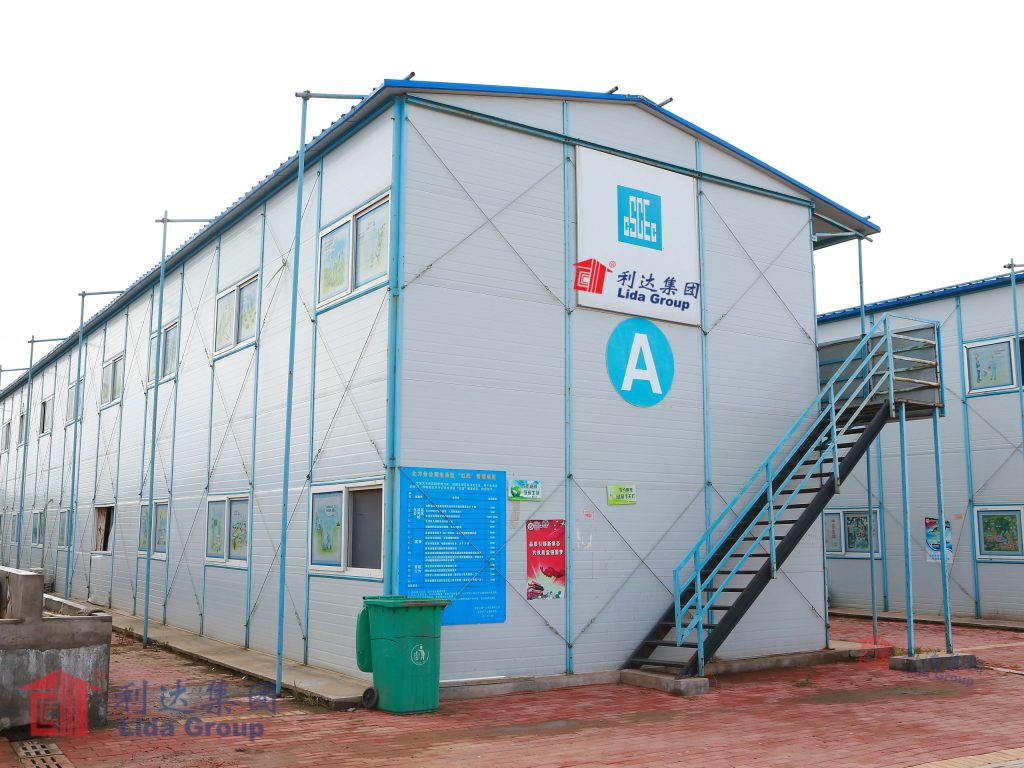
3.4 Safety and Compliance: Meeting Global Mining Standards
Safety is a top priority for mining corporations, and Lida Group’s mobile houses are designed to meet or exceed the strict safety regulations set by local governments and international bodies. The company’s commitment to safety is evident in every aspect of its product design and production.
3.4.1 Fire Safety
Mining camps are at risk of fires due to factors such as electrical malfunctions, cooking accidents, or flammable materials (such as fuel for mining equipment). Lida Group’s mobile houses are equipped with multiple fire safety features to minimize this risk:
- Fire-Resistant Materials: All materials used in the mobile houses (including structural steel, exterior cladding, and insulation) are fire-resistant. For example, the fiber cement boards have a fire rating of A1 (the highest level, meaning they are non-combustible), and the insulation materials are treated to be fire-retardant, preventing the spread of flames.
- Smoke and Fire Detectors: Each module is equipped with smoke detectors and heat sensors that are connected to a central alarm system. If a fire is detected, the alarm is triggered, and emergency lights (which are powered by a backup battery) turn on to guide workers to safety.
- Fire Extinguishers and Hydrants: Fire extinguishers are placed in easily accessible locations throughout the camp (such as hallways and kitchens), and larger camps are equipped with fire hydrants connected to a water supply (either a tank or a local source) to help extinguish larger fires.
- Emergency Exit Routes: The layout of the camp is designed to include clear, unobstructed emergency exit routes, with illuminated signs pointing to the nearest exits. Each module has at least two exit doors to ensure that workers can escape quickly in case of a fire.
3.4.2 Structural Safety
As mentioned earlier, Lida Group’s mobile houses undergo rigorous testing to ensure they can withstand extreme conditions. This structural safety is critical for protecting workers from harm in the event of natural disasters (such as earthquakes or storms) or mining-related accidents (such as blasting vibrations). The company’s buildings meet international standards for structural safety, including:
- ISO 9001: Quality management system certification, ensuring that the production process meets global standards for consistency and reliability.
- OSHA (Occupational Safety and Health Administration) Standards: Compliance with OSHA’s regulations for workplace safety, including requirements for structural integrity, electrical safety, and ventilation.
- Local Building Codes: Lida Group works closely with local authorities to ensure that its mobile houses comply with regional building codes, which may vary depending on the location of the mining site (e.g., seismic codes in earthquake-prone areas).
3.4.3 Sanitation and Health Safety
Maintaining good sanitation in mining camps is essential for preventing the spread of diseases, especially in remote areas where medical facilities are limited. Lida Group’s mobile houses are designed to meet high sanitation standards:
- Plumbing Systems: The plumbing systems are made from high-quality, corrosion-resistant materials (such as PVC or stainless steel) to prevent leaks and contamination. The systems include separate lines for potable water (for drinking and cooking) and non-potable water (for washing and toilet flushing), ensuring that drinking water remains clean.
- Toilet and Shower Facilities: Toilet modules are equipped with flush toilets (connected to a septic tank or wastewater treatment system) and handwashing stations with soap and running water. Shower modules have hot water systems (powered by solar energy or diesel heaters, depending on the site) to ensure that workers can maintain personal hygiene even in cold conditions.
- Ventilation: All modules are equipped with natural and mechanical ventilation systems to circulate fresh air and reduce the buildup of moisture, mold, and odors. This improves indoor air quality and reduces the risk of respiratory illnesses among workers.
By prioritizing safety and compliance, Lida Group helps mining corporations protect their most valuable asset—their workforce—while avoiding costly regulatory penalties.
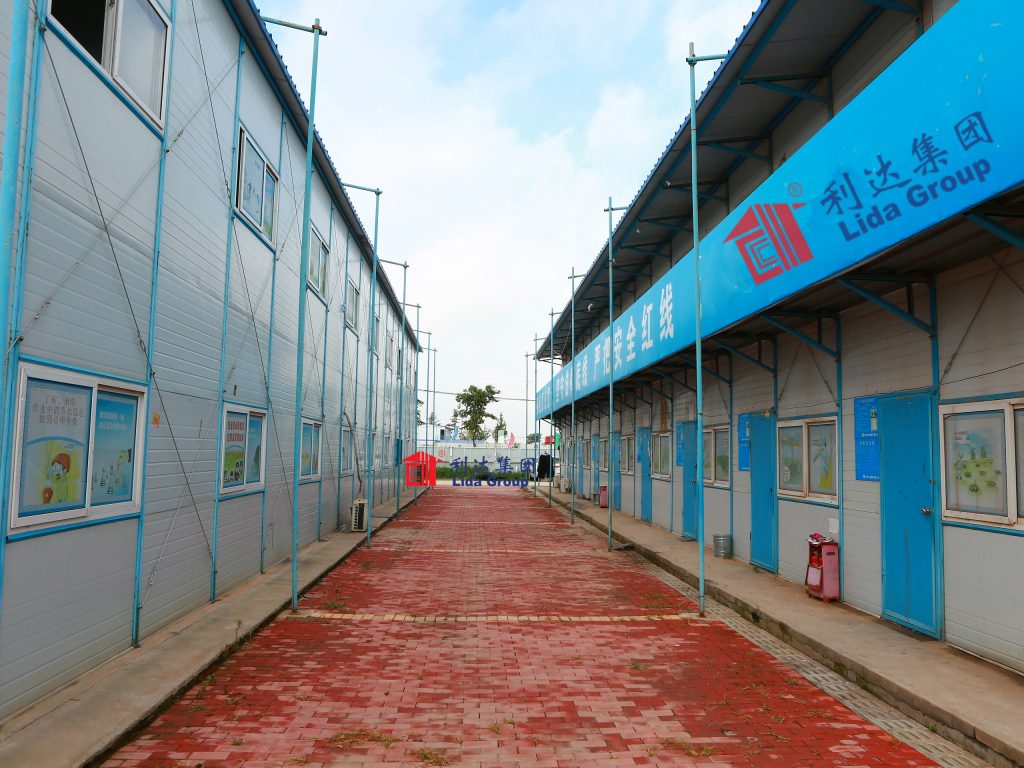
3.5 Sustainability: Aligning with Mining’s ESG Goals
In recent years, the mining industry has faced increasing pressure from investors, governments, and communities to adopt more sustainable practices and reduce its environmental footprint. Environmental, Social, and Governance (ESG) performance has become a key factor in determining a company’s reputation and long-term profitability. Lida Group’s mobile houses are designed with sustainability in mind, helping mining corporations meet their ESG goals.
3.5.1 Reduced Environmental Impact During Production
Traditional construction generates a significant amount of waste, as materials are cut and shaped on-site, and excess materials are often discarded. Lida Group’s off-site manufacturing process minimizes waste in several ways:
- Precision Cutting: Using advanced computer-aided design (CAD) software and automated cutting machines, the company ensures that materials are cut to exact specifications, reducing the amount of scrap material generated.
- Material Recycling: Any scrap material (such as steel or aluminum) generated during production is recycled, rather than being sent to landfills. This reduces the demand for virgin materials and lowers the carbon footprint of the manufacturing process.
- Energy Efficiency in Factories: Lida Group’s factories are equipped with energy-efficient lighting, heating, and cooling systems, as well as solar panels to generate renewable energy. This reduces the amount of fossil fuel energy used in production, lowering greenhouse gas emissions.
3.5.2 Energy-Efficient Design
Lida Group’s mobile houses are designed to be energy-efficient, reducing the amount of energy required to heat, cool, and power the buildings. This not only lowers the environmental impact of the camp but also reduces energy costs for mining corporations. Key energy-efficient features include:
- High-Performance Insulation: As mentioned earlier, the buildings are equipped with high-R-value insulation, which reduces heat transfer between the interior and exterior. This means that less energy is needed to heat the building in cold climates or cool it in hot climates.
- Energy-Efficient Appliances: When furnishing the mobile houses, Lida Group uses energy-efficient appliances, such as LED lighting, low-energy refrigerators, and efficient HVAC systems. LED lighting uses up to 75% less energy than traditional incandescent bulbs, and low-energy appliances can reduce electricity consumption by 30-50%.
- Renewable Energy Integration: The company’s mobile houses are designed to be compatible with renewable energy systems, such as solar panels and wind turbines. For example, the roof of the modules is reinforced to support the weight of solar panels, and the electrical system is wired to integrate with solar inverters. This allows mining camps to rely on renewable energy sources, reducing their dependence on diesel generators (which are noisy, polluting, and costly to operate).
3.5.3 Recyclability and Reusability
Unlike traditional buildings, which are often demolished and sent to landfills when no longer needed, Lida Group’s mobile houses are fully recyclable and reusable. The modular design allows the units to be disassembled into individual components, which can be:
- Reused: The steel frames, insulation panels, and windows can be reused in new mobile houses, reducing the need for new materials.
- Recycled: Components that are no longer usable can be recycled into new materials (e.g., steel can be melted down and reused to make new frames).
This recyclability and reusability align with the circular economy principles that many mining corporations are adopting, helping them reduce their environmental footprint and improve their ESG performance.
3.6 Cost-Effectiveness: Delivering Value for Mining Budgets
While quality, durability, and safety are critical, mining corporations also need camp solutions that are cost-effective. Lida Group’s mobile houses deliver value in several ways, reducing both upfront and long-term costs.
3.6.1 Lower Upfront Costs
Compared to traditional construction, Lida Group’s mobile houses have lower upfront costs for several reasons:
- Reduced Labor Costs: Off-site manufacturing requires fewer on-site workers, and the assembly process is faster, reducing labor costs by 30-50%.
- Minimized Material Waste: As mentioned earlier, the precision of factory production reduces material waste, lowering the cost of materials.
- No Site Preparation Delays: Traditional construction requires extensive site preparation (such as grading, digging foundations, and installing utilities), which can be costly and time-consuming. Lida Group’s mobile houses require minimal site preparation—often just a level surface and access to utilities—reducing these costs.
3.6.2 Lower Long-Term Costs
In addition to lower upfront costs, Lida Group’s mobile houses also reduce long-term costs for mining corporations:
- Low Maintenance Requirements: The high-quality materials used in the mobile houses (such as galvanized steel and fire-resistant cladding) are low-maintenance, requiring minimal repairs or replacements over time. For example, the galvanized steel frames do not need to be painted every few years like traditional steel frames, and the fiber cement boards are resistant to rot and termites, eliminating the need for pest control or wood treatment.
- Energy Savings: The energy-efficient design of the mobile houses reduces electricity and fuel costs. For example, a camp equipped with solar panels and high-performance insulation can reduce energy costs by 40-60% compared to a traditional camp powered by diesel generators.
- Reduced Relocation Costs: When a mining site is depleted, the mobile houses can be disassembled and relocated to a new site, rather than being demolished. This eliminates the cost of building a new camp from scratch and reduces the waste associated with abandoning a traditional camp.
3.6.3 Predictable Costs
One of the biggest challenges with traditional construction is the risk of unexpected costs—such as delays due to weather, material shortages, or design changes. Lida Group’s off-site manufacturing process minimizes these risks, as the production timeline and material costs are planned and controlled in advance. The company provides mining corporations with a detailed, fixed-price quote before production begins, ensuring that there are no hidden costs or surprises. This predictability allows mining companies to budget more effectively and avoid cost overruns.
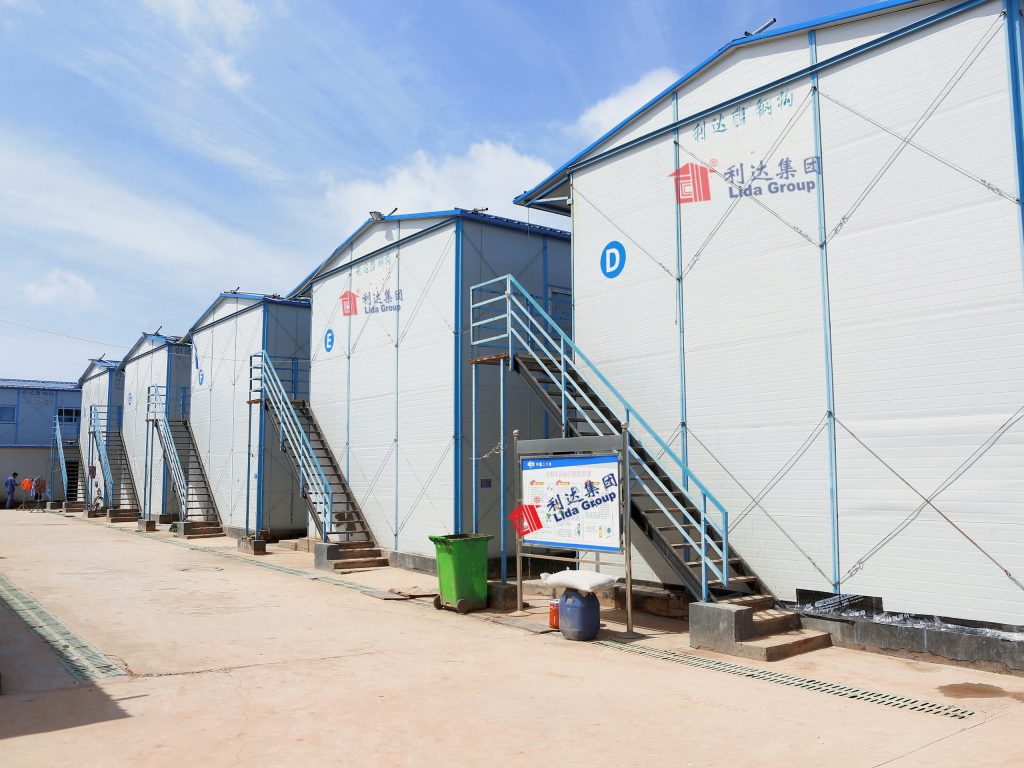
4. Case Studies: Mining Corporations Benefiting from Lida Group’s Mobile Houses
To illustrate the real-world impact of Lida Group’s mobile houses, let’s examine two case studies of mining corporations that have successfully used these solutions to address their camp needs.
4.1 Case Study 1: Gold Mining Project in the Australian Outback
A large international mining corporation was developing a gold mining project in the Australian Outback—a remote region characterized by extreme heat (temperatures exceeding 45°C/113°F in summer), sandstorms, and limited infrastructure. The company needed a camp to house 200 workers, with facilities including bedrooms, kitchens, dining halls, offices, and medical clinics. The camp had to be operational within 8 weeks to meet the project’s timeline, and it needed to withstand the harsh desert conditions.
Challenges
- Extreme Heat: Traditional buildings would struggle to maintain livable indoor temperatures without excessive energy use.
- Sandstorms: The camp needed to be resistant to sand erosion and dust infiltration.
- Remote Location: Transporting materials and labor to the site was difficult and costly.
- Tight Timeline: Traditional construction would take 6-8 months, which was too slow for the project.
Solution
The mining corporation partnered with Lida Group to design and deliver a modular mobile camp. Lida Group’s solution included:
- High-Performance Insulation: The mobile houses were equipped with polyurethane foam insulation and reflective roof layers to keep the interior cool in extreme heat.
- Sand-Resistant Design: The exterior cladding was made from metal composite panels (MCPs) with a smooth surface that resists sand erosion, and the windows and doors had tight seals to prevent dust infiltration.
- Solar Energy Integration: Solar panels were installed on the roof of the modules to provide renewable energy for lighting, air conditioning, and appliances, reducing reliance on diesel generators.
- Rapid Deployment: The modules were manufactured in Lida Group’s factory in China and shipped to the Australian Outback via sea and road. Once on-site, the camp was assembled in just 6 weeks—2 weeks ahead of schedule.
Results
- Operational Efficiency: The camp was operational on time, allowing the mining corporation to start gold extraction as planned, avoiding costly delays.
- Worker Comfort: The insulation and air conditioning systems maintained indoor temperatures at a comfortable 24°C (75°F) even during the hottest summer days, improving worker morale and productivity.
- Cost Savings: The solar energy system reduced diesel consumption by 50%, saving the company approximately $100,000 per year in fuel costs. Additionally, the low-maintenance materials reduced maintenance costs by 30% compared to a traditional camp.
- Durability: After 3 years of operation, the camp showed no signs of sand erosion or structural damage, demonstrating its ability to withstand the harsh desert conditions.
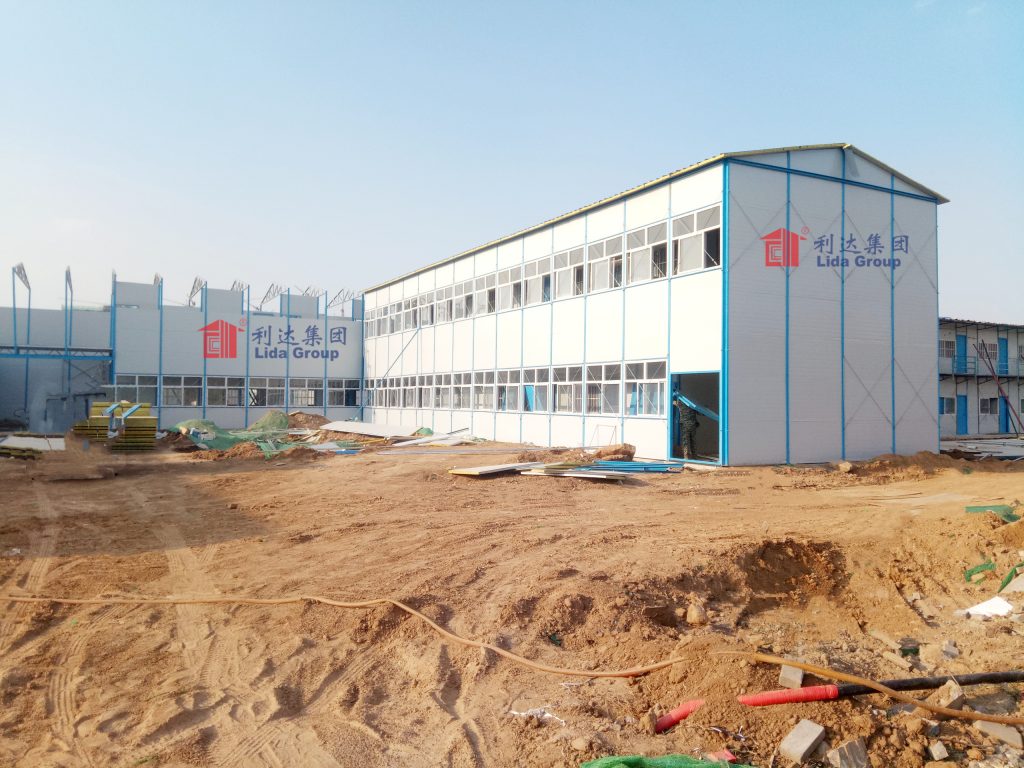
4.2 Case Study 2: Copper Mining Project in Northern Canada
A Canadian mining company was expanding its copper mining operations in Northern Canada, a region known for sub-zero temperatures (as low as -40°C/-40°F in winter), heavy snowfall, and seismic activity. The company needed to expand its existing camp to house an additional 150 workers, with facilities including bedrooms, a recreation center, and a workshop. The new camp had to be integrated with the existing camp and meet strict Canadian safety standards for seismic resistance and fire safety.
Challenges
- Extreme Cold: The camp needed to maintain warm indoor temperatures and prevent water pipes from freezing.
- Heavy Snowfall: The roof of the modules needed to withstand heavy snow loads (up to 2 meters of snow).
- Seismic Activity: The camp needed to be seismically resistant to withstand earthquakes common in the region.
- Integration with Existing Camp: The new modules needed to be compatible with the existing camp’s utilities (water, electricity, and wastewater systems).
Solution
Lida Group worked closely with the mining company to design a customized mobile camp that addressed these challenges:
- Cold-Weather Design: The mobile houses were equipped with rock wool insulation (which performs well in cold temperatures) and heated floors to prevent pipes from freezing. The windows and doors had triple-glazed glass and thermal breaks to reduce heat loss.
- Snow Load Resistance: The roof structure was reinforced with additional steel beams to withstand heavy snow loads, and the roof was sloped to allow snow to slide off, preventing accumulation.
- Seismic Resistance: The modules were designed to meet Canada’s National Building Code (NBC) seismic requirements, with flexible connections between modules that can absorb vibrations during an earthquake.
- Integration with Existing Camp: Lida Group’s engineers worked with the mining company to ensure that the new modules were compatible with the existing camp’s utilities. The new modules were connected to the existing water and electricity systems using standard connectors, and the wastewater was routed to the existing septic tank.
Results
- Safety Compliance: The camp passed all inspections by Canadian regulatory authorities, meeting the strict seismic and fire safety standards.
- Worker Well-Being: The heated floors and insulation kept the interior warm and comfortable, reducing the risk of cold-related illnesses among workers. The recreation center, which included a gym and lounge area, improved worker morale and reduced turnover.
- Flexibility: When the mining operation shifted to a new area of the site 2 years later, 50% of the modules were disassembled and relocated to the new location, saving the company $500,000 in new construction costs.
- Durability: After 4 years of operation, the camp has withstood multiple winter storms and a minor earthquake without any structural damage, proving its durability in harsh conditions.
These case studies demonstrate that Lida Group’s mobile houses are not just theoretical solutions but practical, effective tools that help mining corporations overcome the unique challenges of camp construction and operation.
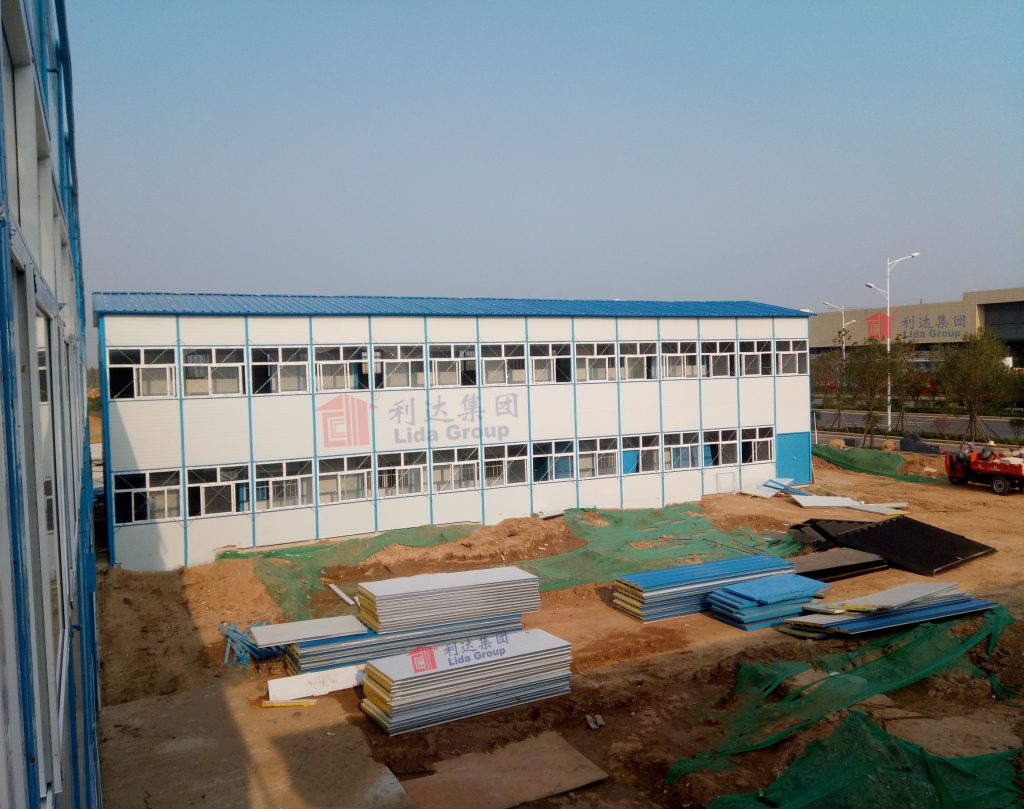
5. Conclusion
The mining industry’s need for durable, fast-to-deploy, flexible, safe, and sustainable camp solutions has never been greater. Traditional construction methods, with their long build times, high costs, and inability to withstand harsh conditions, are no longer sufficient to meet the demands of modern mining operations. Lida Group’s high-quality mobile houses have emerged as a superior alternative, offering a range of benefits that directly address the industry’s challenges.
From exceptional durability—enabled by premium materials and rigorous testing—to rapid deployment that minimizes downtime, Lida Group’s mobile houses are engineered to perform in the most remote and harsh mining environments. The modular design and customization options provide the flexibility that mining corporations need to adapt to changing workforce sizes and operational needs, while the focus on safety and compliance ensures that workers are protected and regulatory requirements are met.
Moreover, Lida Group’s commitment to sustainability aligns with the mining industry’s growing ESG priorities, helping companies reduce their environmental footprint and improve their reputation. Finally, the cost-effectiveness of the mobile houses—both in terms of upfront costs and long-term savings—delivers real value for mining budgets, allowing corporations to maximize profitability without compromising on quality.
As the mining industry continues to expand into more challenging locations and face increasing pressure to operate sustainably, the demand for high-quality prefab mobile houses will only grow. Lida Group, with its deep understanding of the mining industry’s needs and its commitment to innovation and quality, is well-positioned to remain a leading partner for mining corporations worldwide. By choosing Lida Group’s mobile houses, mining companies are not just investing in a camp solution—they are investing in the efficiency, safety, and long-term success of their operations.

Related news
-
Disaster Relief Transformed: Rapid Deployment of Temporary Sandwich House Solutions via Lida Group's Prefab Building Expertise.
2025-08-25 11:33:00
-
Future-Ready Sites: Lida Group Integrates IoT Monitoring into Container Worker Dormitories Through Smart Prefab Building Systems
2025-08-25 10:22:47
-
Lida Group Unveils High Quality Mobile House Series Using Advanced Prefab Building Techniques for Temporary Sandwich Panel Homes
2025-08-25 11:00:12
contact us
- Tel: +86-532-88966982
- Whatsapp: +86-13793209022
- E-mail: sales@lidajituan.com


